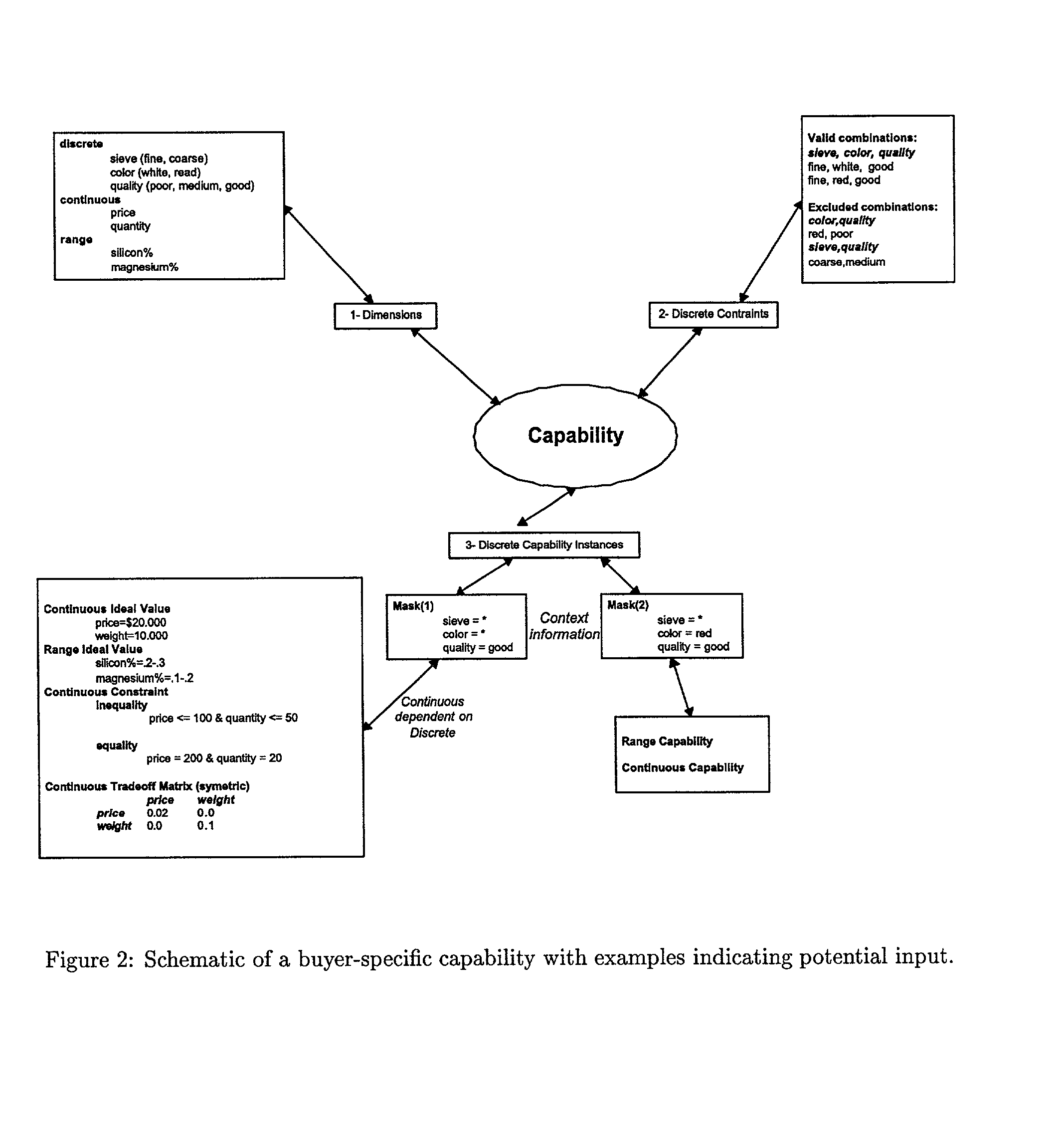Method and system for discovery of trades between parties
a technology of trade and discovery method, applied in the field of method and system for discovery of trade between parties, can solve the problems of high total cost of ownership, inability to make more informed use of information, and inability to find information, etc., and achieve the effect of cost saving
- Summary
- Abstract
- Description
- Claims
- Application Information
AI Technical Summary
Benefits of technology
Problems solved by technology
Method used
Image
Examples
Embodiment Construction
[0053] 6.1 Theory
[0054] In this section we outline the mathematical foundations of the optimization process in sufficient detail to allow for computer implementation.
[0055] 6.1.1 The Negotiation Space
[0056] In Table 1 we define the parameters which collectively define the space of negotiation X. For each of the n.sub.c continuous variables, we specify an allowed range over which that continuous dimension may vary as x.sub.i .epsilon. X.sub.i=[x.sub.i, {overscore (x)}.sub.i], where x is the n.sub.c-vector of lower continuous bounds
1TABLE 1 Definition of the negotiation search space. n.sub.c number of continuous dimensions n.sub.d number of discrete dimensions n.sub.r number of range dimensions x n.sub.c-vector of values for continuous dimensions .kappa. n.sub.d-vector of values for continuous dimensions .chi..sub.i value of ith continuous variable .kappa..sub.i value of ith discrete variable
[0057] and {overscore (x)} is the n.sub.c-vector of upper continuous bounds. Each discrete var...
PUM
 Login to View More
Login to View More Abstract
Description
Claims
Application Information
 Login to View More
Login to View More - R&D
- Intellectual Property
- Life Sciences
- Materials
- Tech Scout
- Unparalleled Data Quality
- Higher Quality Content
- 60% Fewer Hallucinations
Browse by: Latest US Patents, China's latest patents, Technical Efficacy Thesaurus, Application Domain, Technology Topic, Popular Technical Reports.
© 2025 PatSnap. All rights reserved.Legal|Privacy policy|Modern Slavery Act Transparency Statement|Sitemap|About US| Contact US: help@patsnap.com



